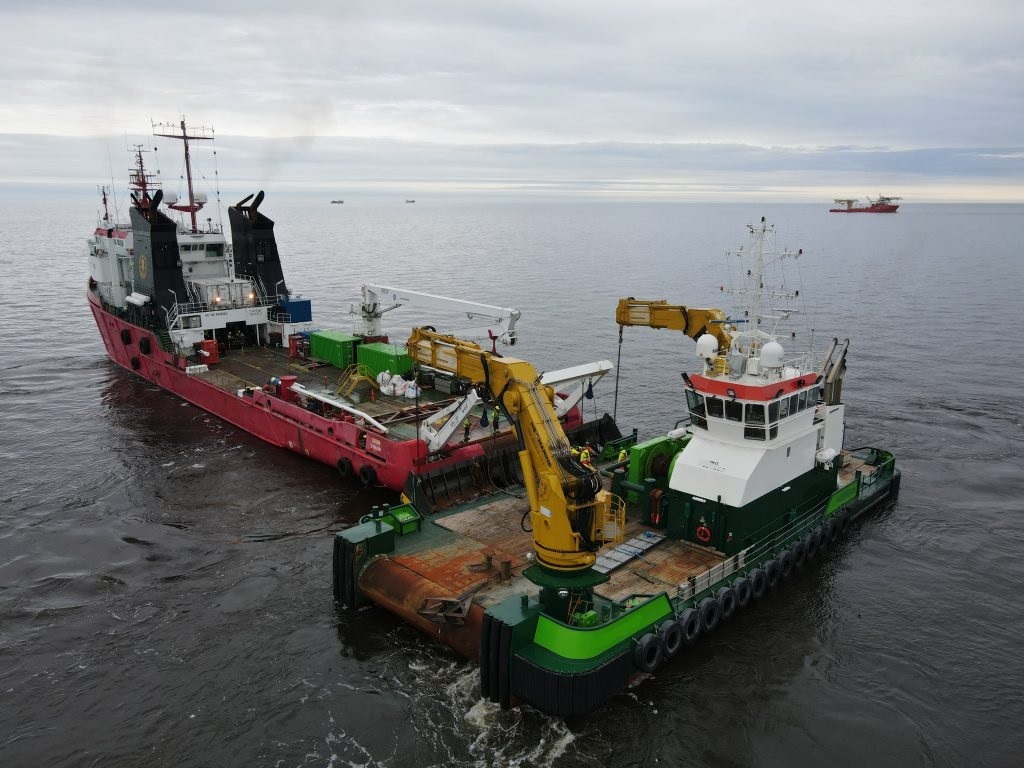
Gravity-based structure No 1 (GBS-1) of the Arctic LNG 2 plant has been successfully transported along the Sea Canal (shipping canal for an access to the Gulf of Ob in the Kara Sea). According to the statement of FSUE Hydrographic Company, the success of the operation was ensured by dredging works with over 1.8 million cbm of bottom soil dredged within less than a month.
In order to ensure timely delivery and installation of GBS-1, the contractor prepared and deployed the fleet of three dredgers in the shortest possible time. The seabed survey took a week (between July 8 and 19, 2023). By the beginning of the operation on transportation of GBS-1 along the Sea Canal, the design depth of 15.1 m was ensured.
“Between 15.07.2023 and 11.08.2023, the scope of dredging works in the Sea Canal exceeded 1.8 million cubic meters of bottom soil,” said Maksim Kulinko, Deputy Director of Rosatom’s NSR Directorate, adding that there are no risk of failure to ensure the required dimensions of the Sea Canal in 2023 taking into account the current pace of work.
In order to provide for uninterrupted and safe passage of ships in the Gulf of Ob of the Kara Sea within a short ice-free navigation period of 2023, the Sea Canal is to undergo the reconstruction with bottom marks to reach the design level as well as the expansion to the required width (from 475 m to 493 m at straight sections).
The scope of dredging works in 2023 is estimated at 5 million cbm of material. The works are to be completed by October 2023.
It took one month to tow the GBS-1 from the Offshore Superfacility Construction Centre in Belokamenka, Murmansk Region to the installation site at Utrenniy Terminal in the Gulf of Ob, Kara Sea by the Northern Sea Route. On 20 July 2023, Russian President Vladimir Putin attended the launch ceremony for the first finished LNG production line under the Arctic LNG 2 project.
NOVATEK’s Arctic LNG 2 project provides for construction of three LNG trains, with a capacity of 6.6 mtpa of LNG each, and at least 1.6 mtpa of stable gas condensate. The total LNG capacity of the three trains will be 19.8 mtpa. The project employs an innovative construction concept using gravity-based structures (GBS). With no need to build an LNG plant at the site, the environmental impact can be minimized.
The second and the third trains are to be put into operation in 2024 and 2026 respectively.
The comprehensive development of the Arctic zone of the Russian Federation is one of the country’s strategic priorities. Increasing the traffic along the NSR is of paramount importance for solving the tasks set in the field of transport and delivery of goods. The development of this logistics corridor is ensured through the establishment of regular cargo transportation, the construction of new nuclear-powered icebreakers and the modernization of the relevant infrastructure. Companies of Rosatom take an active part in this work.



